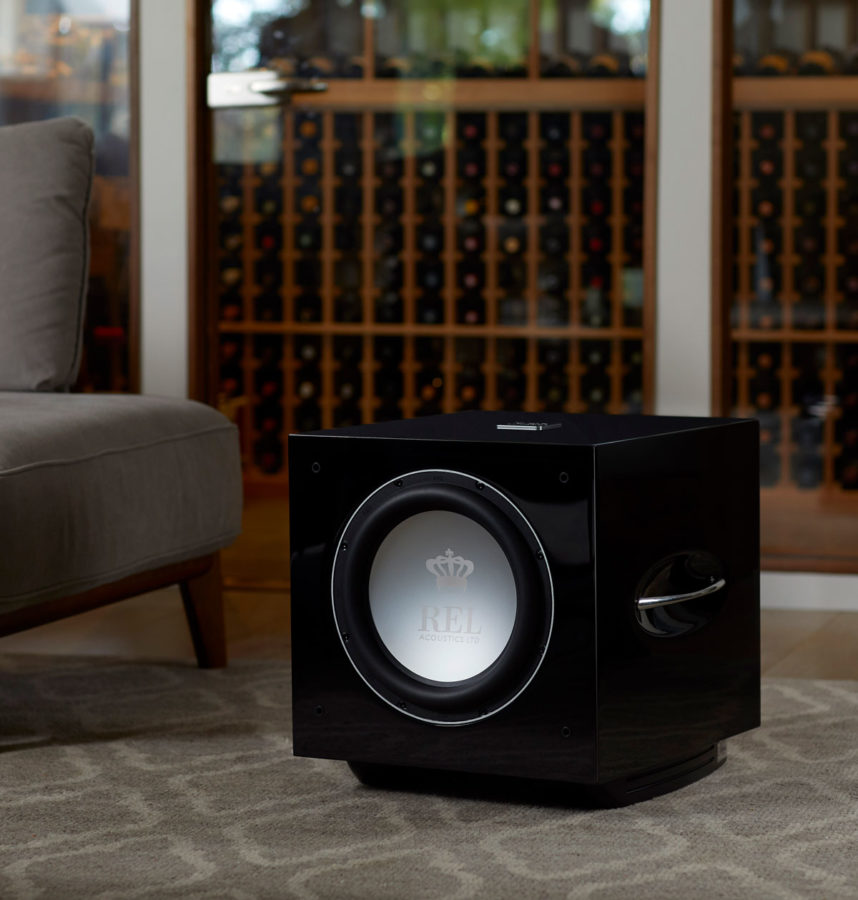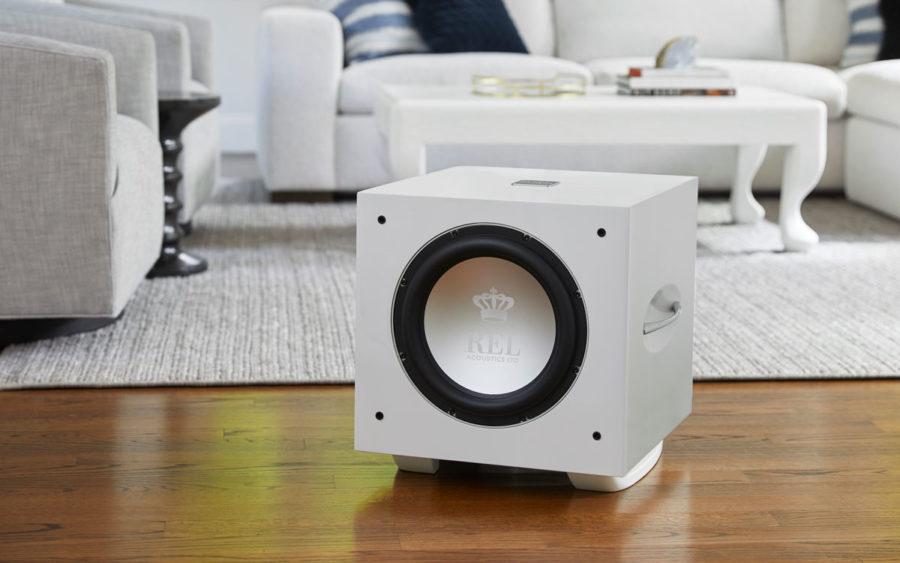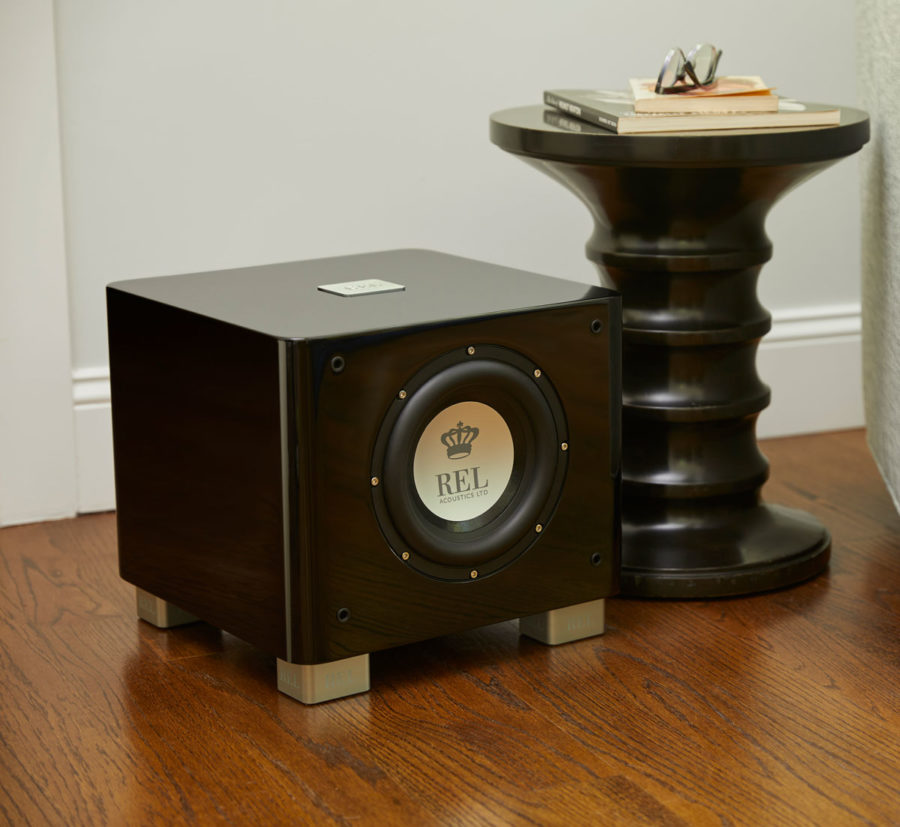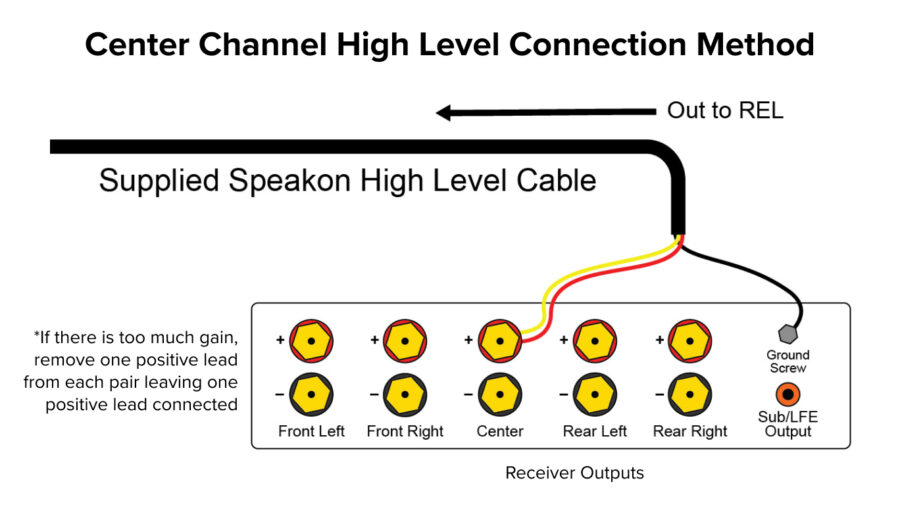Blog
Front and Center
Reactions to a Center Channel Subwoofer

Anyone who learns home theatre quickly comes to understand the importance of the center channel. Most dialogue and much of the action originate from the centre channel, but did you know that without a REL High-Level Input and its ability to restore all the depth and dynamics to this crucial channel, you’re missing out on a great deal of the experience.
Up to 70% of a home theatre’s sound originates from the center channel. As the primary speaker for spoken dialogue and the focus of many action sequences (think: car crash coming right at you) this channel gets a tremendous workout.
Now, step back and take a long hard look at the physical size of your center channel and compare it to your main L-R speakers. If you’re using floorstanders, frequently each of your L-R will be 2-3 times the size of the “matching” center channel. And, as each speaker in a home theatre acts as an individual channel, it’s best to understand the roles of the “teams” of speakers and what they do. We’ve just discussed the center channel, so now we’ll quickly establish what the L-R speakers’ functions are…
The Left and Right Main speakers are critical for establishing scale and context to the front stage. All the obviousness of the center channel requires it being placed into an accurate scale front stage, which is defined by the L-R speakers. Now let’s go back to the center channel; if like most people, your center channel is 1/3-1/2 the size of your main speakers, you can bet that it’s struggling to keep up. I can personally think of only one center channel speaker in my entire career that delivered what experienced high-end types would agree was extraordinary deep bass. It was very large and very expensive; far more than a decent center channel and the correctly partnering REL would be.

Ray Dolby was a legitimate audio genius. Having established the professional theatre standards his team went on to define home theatre standards as well. He was a bit of a perfectionist (surprise!) and he required each channel to be truly Full Range, meaning flat down to 20 Hz. Since we’re focusing on the center channel that means, according to Ray, your center channel needs to be flat to 20 Hz. I know of exactly zero center channels that meet this criterion. Most center channels, even those from excellent speaker manufacturers, run out of useful bass output at around 50 Hz, and many even higher.
Listen Up Please: The single biggest, most dramatic upgrade you can make to an otherwise good theatre rig is to add a traditional REL with High-Level Input to your center channel. Starting no smaller than our REL T/7x and, depending upon your system, scaling UP from there to T/9x, S/510, or S/812. The addition of a REL-connected High Level will wipe away every preconception you’ve ever had about what theatre is supposed to sound like.

Gone is the slightly quacky vocal quality you’ve previously accepted from dialogue tracks, especially in the male voice. Hey, when you take away an octave+ of the bass (from, say, 55 Hz the octave missing runs down to 27.5 Hz and our T/9x is regularly able to deliver bass down to 25 Hz or thereabouts), the sound above it gets kinda weird . As soon as you get your center channel sub dialed in, gone is Donald Duck appearing front and center, replaced by a rich, focused, natural timbre that is exactly what the director and sound designer expected the movie to sound like. Special effects will explode outward from your screen now, and the scale of sound will likely exceed your screen size, rather than being pinched and mean. In short, your movies will roar to life.
It’s crucial that this center channel sub be connected, High Level, directly to the center channel amplifier channel. To the extent that your receiver can be set to Full Range try setting your center channel to Full Range. If you can’t, then try setting it to 40 Hz. You’ll have to increase the level of the REL’s volume and crank the crossover higher to overcome the AVR’s roll-off at 40 Hz, but our RELs can handle it. You’ll still be amazed but what we can retrieve from your center channel. Try it, you’ll send me emails thanking me. Hell, a few of you will name your first borne after me (don’t do that, that’s just weird! LOL). Enjoy!
6 REL Tips:
- Enter the receiver or processor’s setup menu, then go to Speaker Setting, and set the center channel to Full Range, if offered. If not, go for Large and 40 Hz if that’s the deepest you can go. We use a single older center channel with a single 6.5” mid-woofer and routinely tune levels above 108 dB with no strain (and an S/510).
- Use your EARS to set the center channel level and delay. There’s no computerized room tuning system in existence that can match what good judgment and a little experimentation can deliver. Simply switch back and forth while listening to the pink noise (that static-y sound that comes out of your speakers when you set levels manually). You’ll find that after five minutes it all begins to make sense. Your L and R speakers will almost inevitably sound waaay different from each other OR your center channel. Don’t blame the manufacturer…welcome to room acoustics 101! Bounce back and forth between the left speaker and your center. As an additional check, do the same with Right Channel and Center. You’ll get close quickly. Don’t be afraid to raise the level of the Center, as your main speaker may well be more efficient (again, it’s 2.5 times bigger).
- Delay: Next enter into “Distance” in your AVR’s setup menu. Here’s where everyone goes all glassy-eyed and nervous. Amateurs start thinking of running out to buy the fanciest laser range finder at their hardware store. Relax, trust your ears and read your owner’s manual for tips on how to shift your menu into fine calibrations. For Feet, this will allow you to change it into 1/10ft increments. For Meters I have no idea, but presumably something finer than 1/3 meter. Since your center channel will often be placed closer to you than your left and right main speakers, start with a setting of 3’ indicated if you have a receiver that allows you to set distance down to 0 feet indicated. Many don’t these days so whatever base setting (Marantz and Denon, for example, arrive preset to 12 for all L-C-R). If you have this style of processor, be sure to write down all of these basic settings before you do anything else.
- Now, all you need to do is to simply take that base setting and add 3 to it. For my Marantz/Denon example, 3 added to 12 produces a setting of 15. Start there, if it sounds too soft and indistinct (and you feel certain you got the volume level bang on already in step 2) reduce it to 2 (14 for D/M). If it still sounds hard and biting, increase the number to 4 (16 for D/M). The higher the number the “farther” away from you you’re placing your center channel in time. The lower the number, the closer you’re drawing the center speaker towards you. With a little playing around, you’ll find that “Goldilocks” setting where the center channel sinks into the soundstage created by L-R main speakers. It should be neither too loud/aggressive, nor so soft/laid back as to become indistinct.
- Before you do anything, make certain that your center channel is aimed upward directly at your ears, this will greatly improve the clarity of dialogue.
- Your center channel speaker will wind up pretty close to your center channel sub.It doesn’t need to be directly beneath it, just within 3-4 feet on either side of the center channel speaker is fine. If it’s easier (and isn’t unsightly) you can shorten up the High-Level Cable we supply with each REL and connect it directly to the rear terminals on your speakers.












